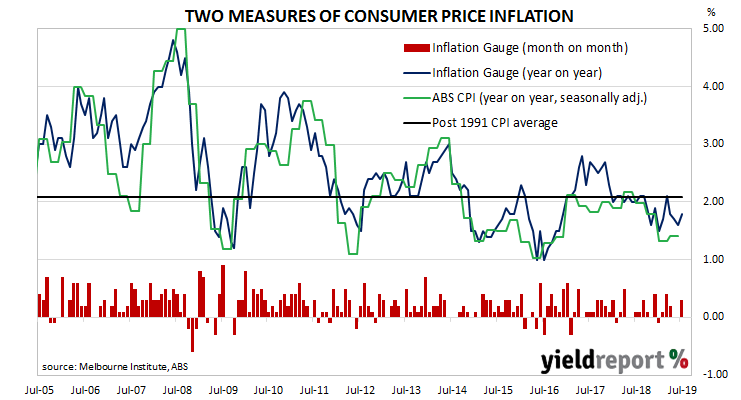The RBA’s stated objective is to achieve an inflation rate of between 2% and 3%, “on average, over time.” Since the GFC, Australia’s inflation rate has been trending lower and lower and, for some years now, it has been below the RBA’s target band. Despite the RBA’s desire for a higher rate, its attempts to drive it up through record-low interest rates have failed to move Australia’s inflation rate to its target band. The latest unofficial measurement of consumer inflation may have accelerated but it is too early to pronounce any transition to a more-inflationary environment just yet.
The Melbourne Institute’s Inflation Gauge is an attempt to replicate the ABS consumer price index (CPI) on a monthly basis. It has turned out to be a reliable leading indicator of the CPI, although there are periods in which the Inflation Gauge and the CPI have diverged for as long as twelve months. On average, the Inflation Gauge’s annual rate tends to overestimate changes in CPI inflation by an average of about 0.1% per quarter.

The Inflation Gauge index increased by 0.3% in July after flat results in both May and June. On an annual basis, the index increased by 1.8%, marking an acceleration from June’s comparable rate of 1.6%.

